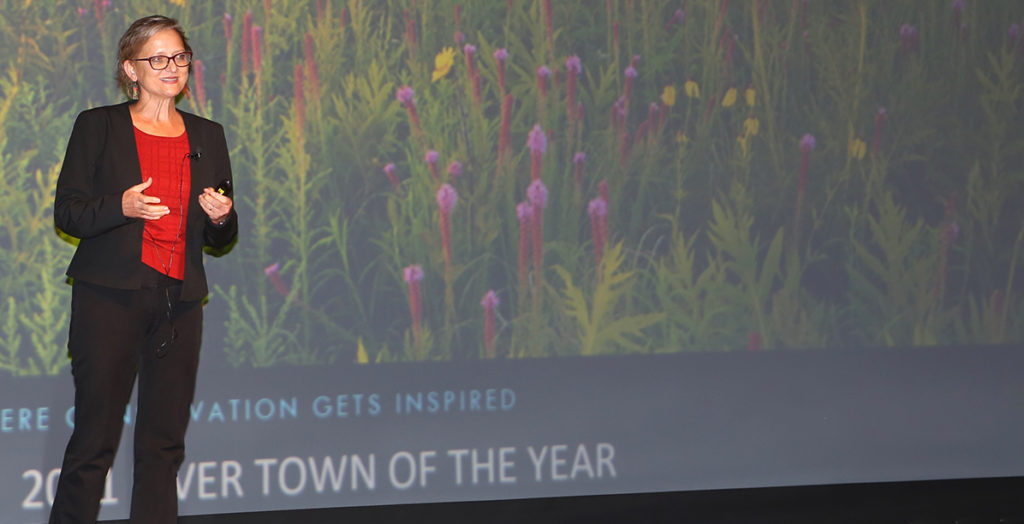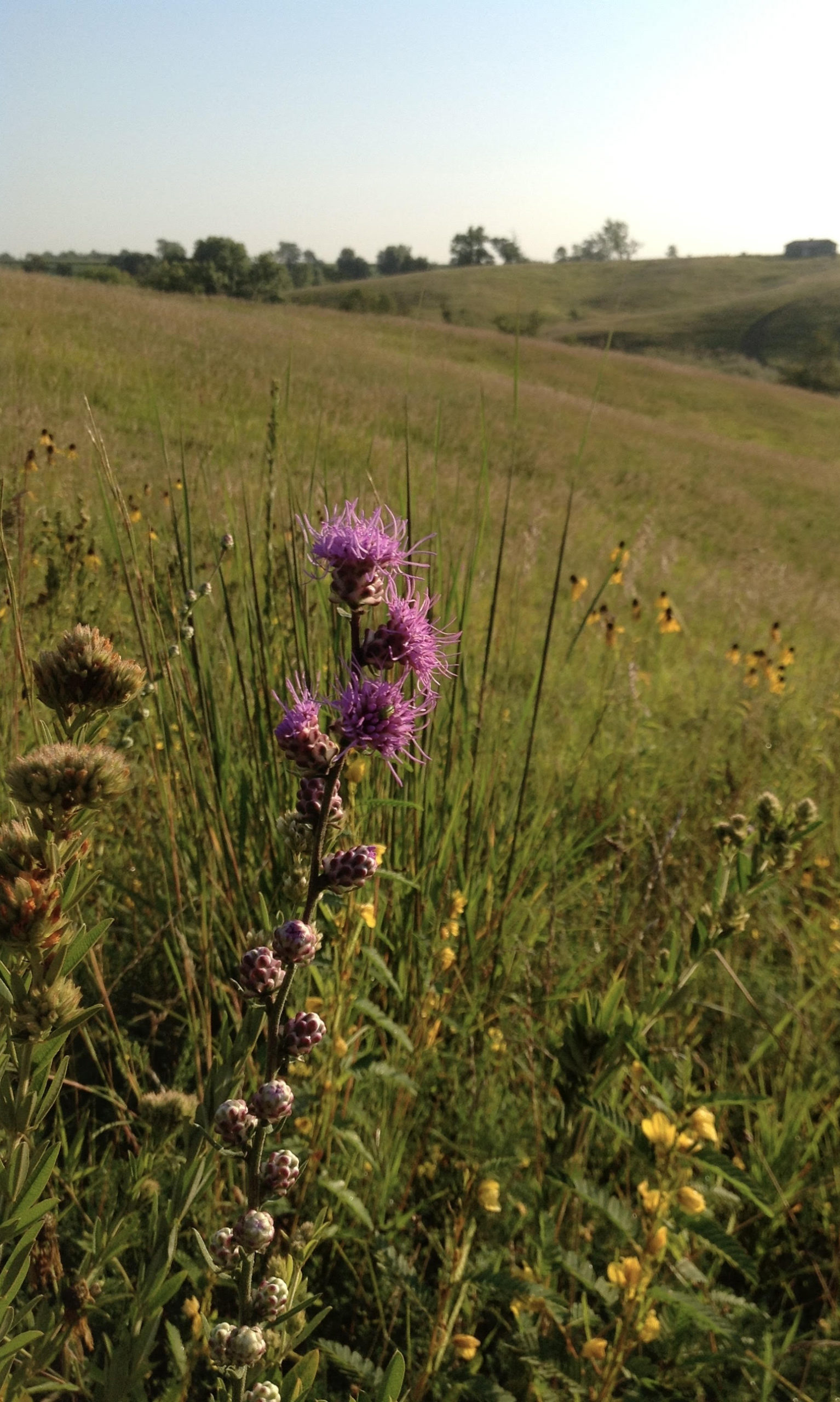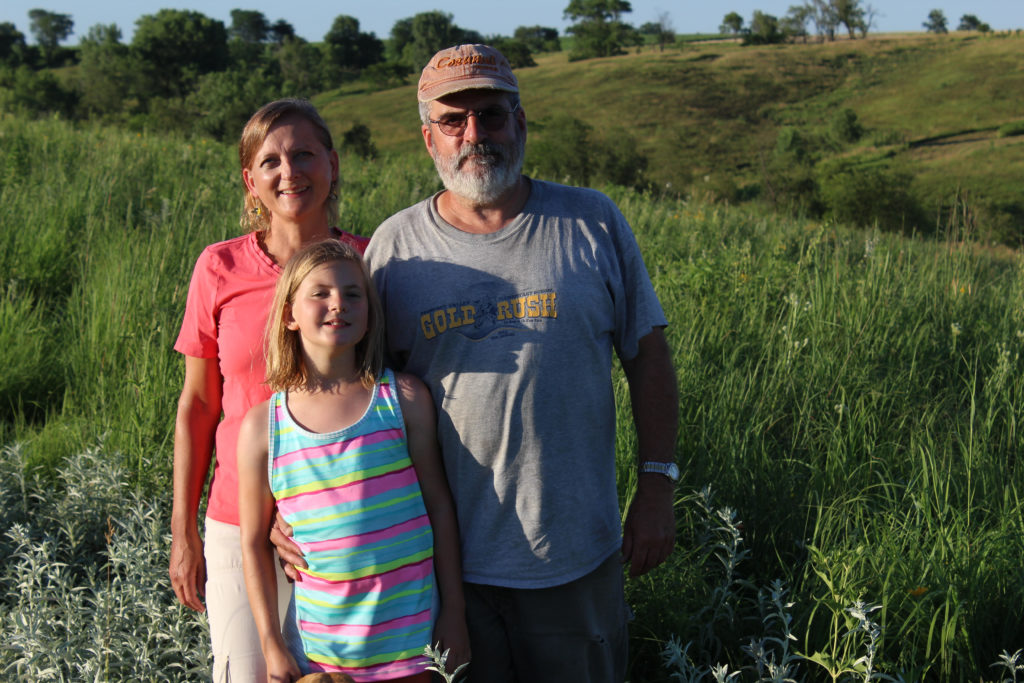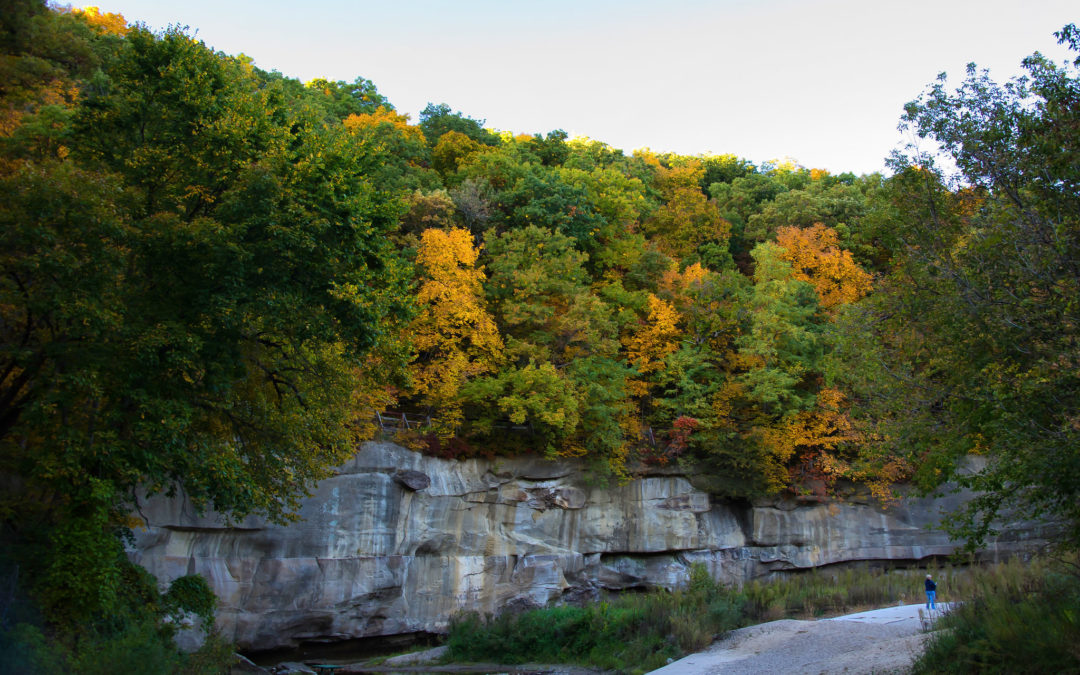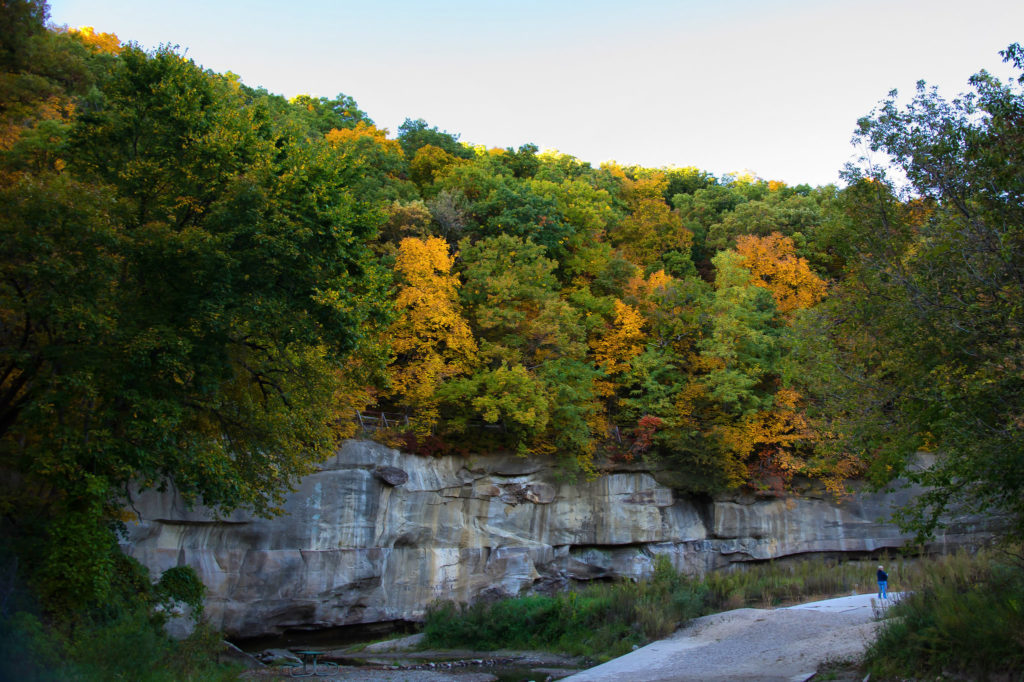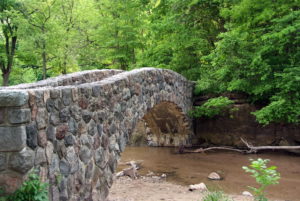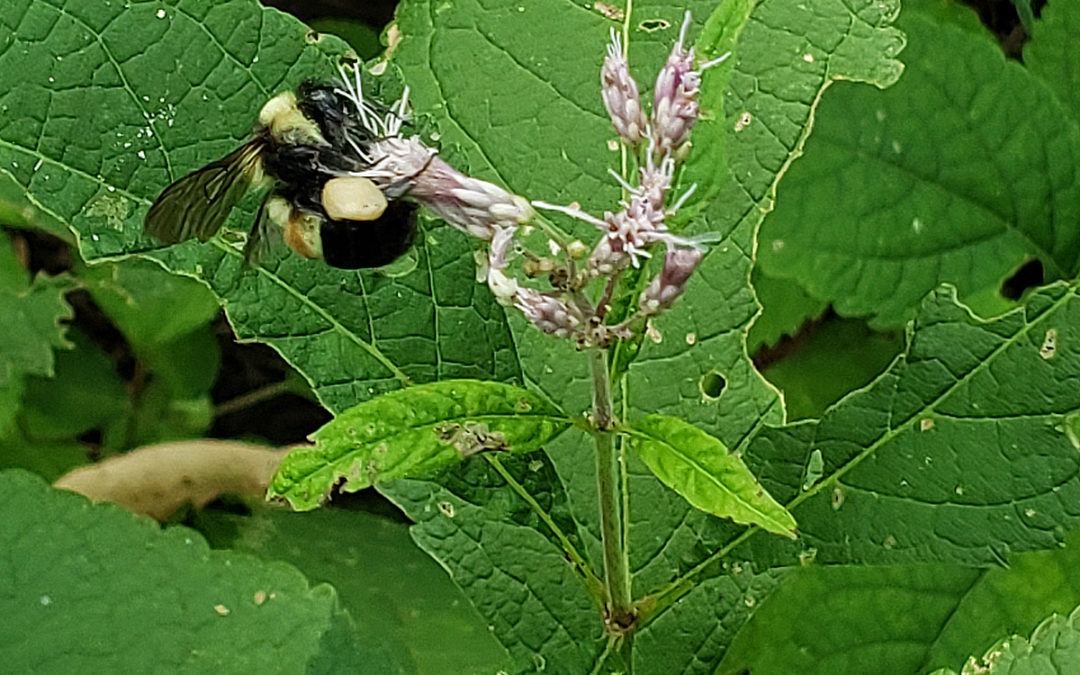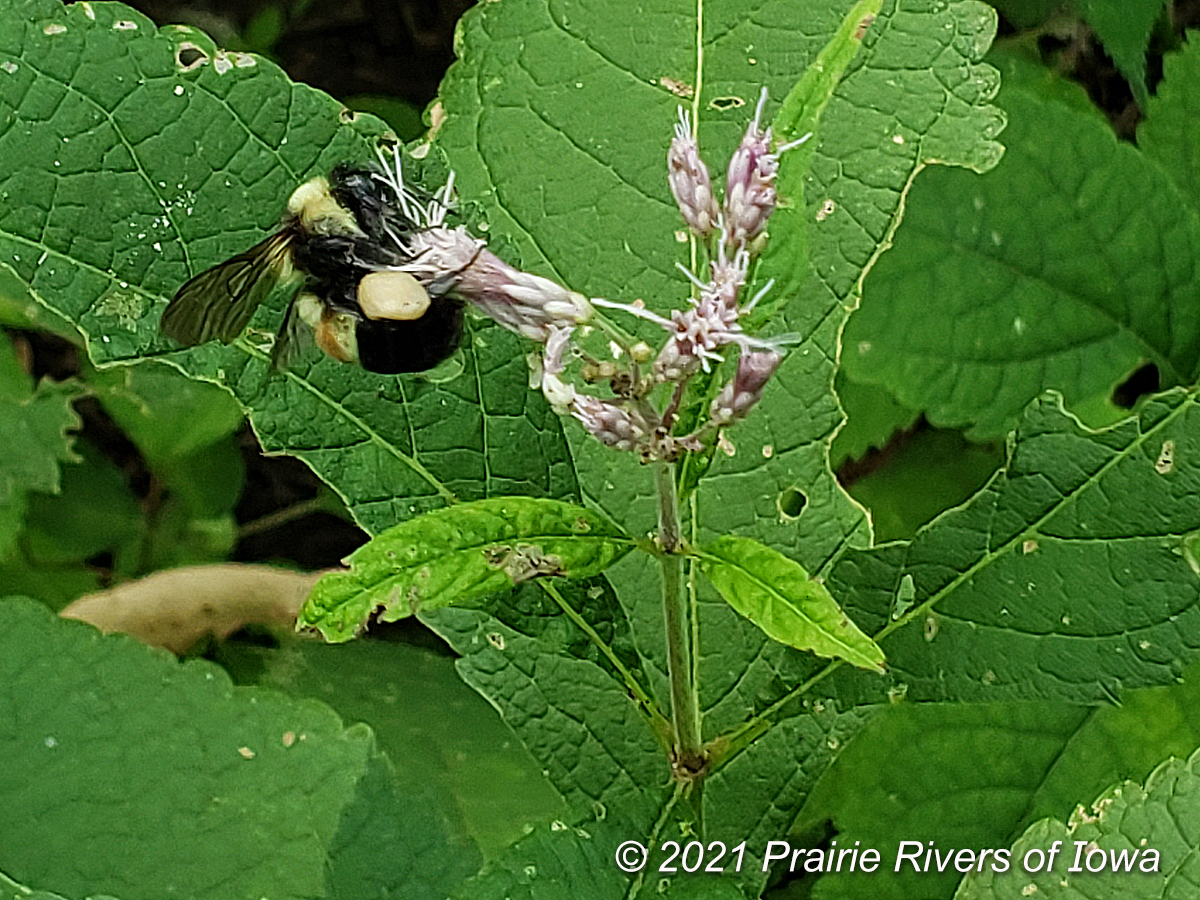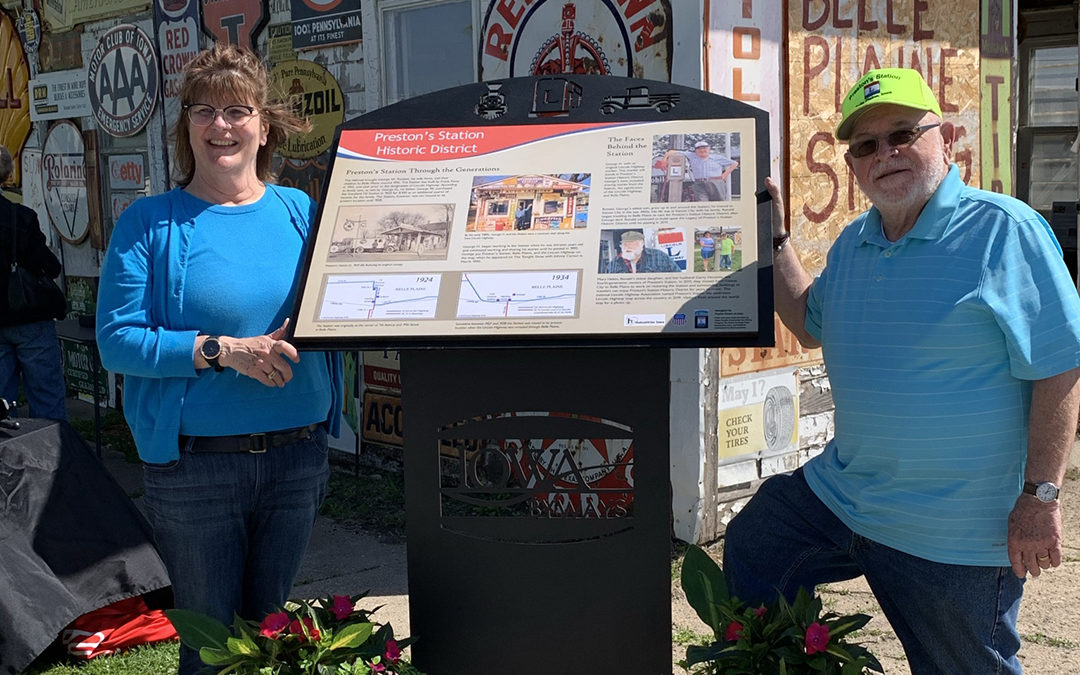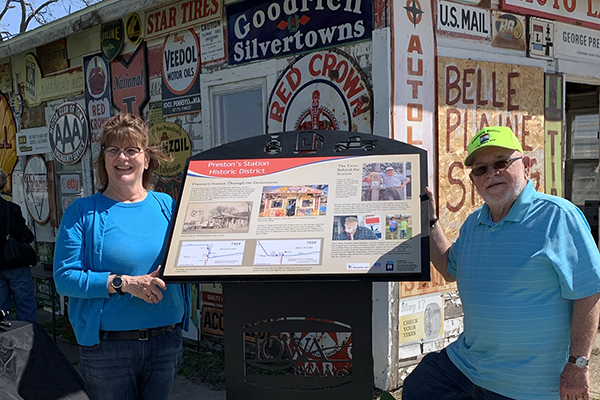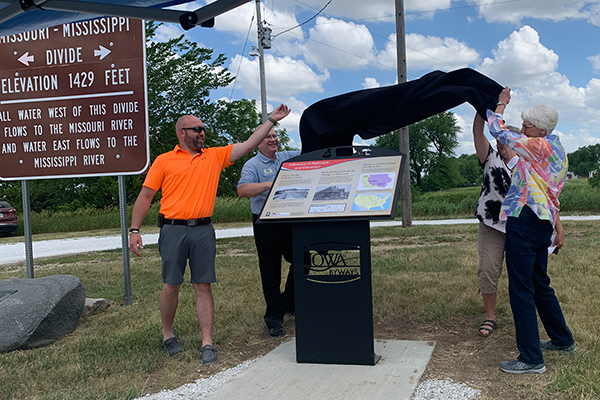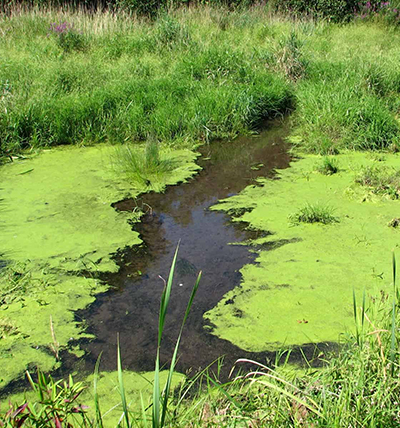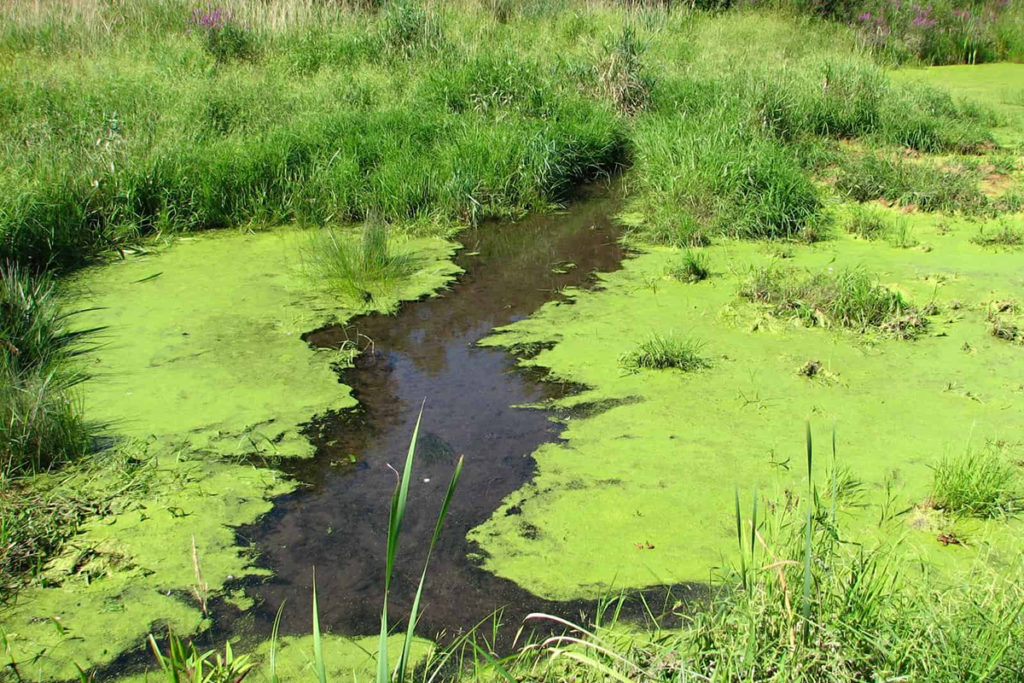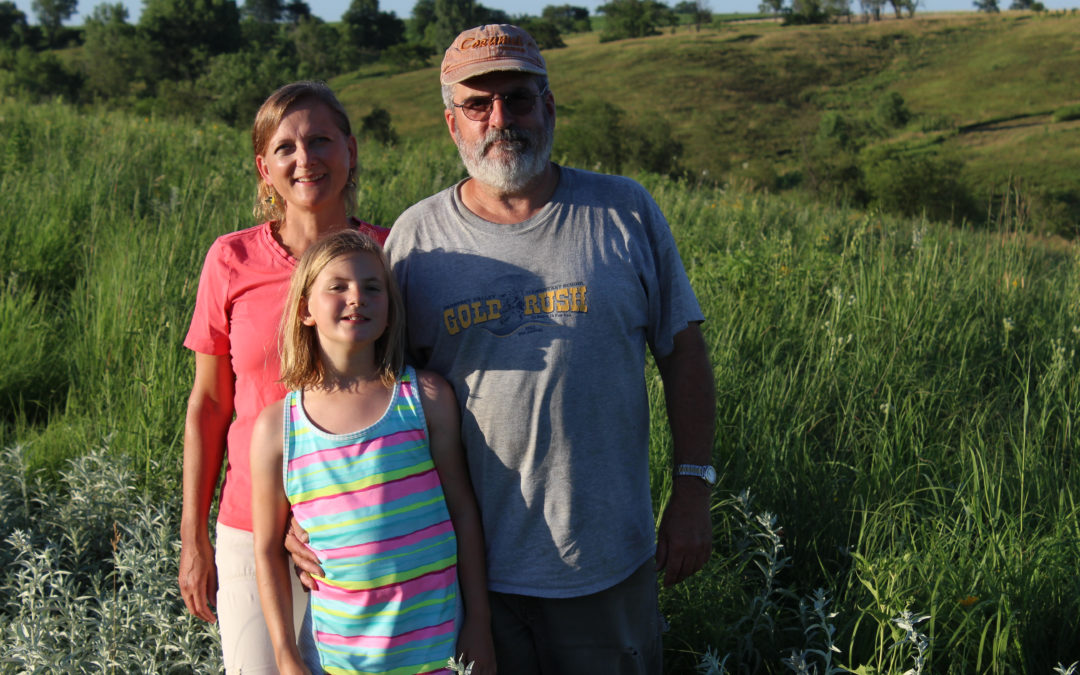
Tall Grass Prairie Restoration Follow Up
NRCS PLANTS Data Team Plant Ecologist Chris Taliga, a featured presenter at our Wild and Scenic Film Festival, shared with the audience a little about the restoration of prairie on her family’s farm. I recently followed up with Chris to learn more about the restoration and what best practices she suggests for those wanting to get started with a similar project of their own!
PRI: Can you summarize what efforts you and your family have taken to restore your 160 acres of Iowa land into a prairie?
Chris: We bought this farm 22 years ago seeking to restore tall grass prairie and to develop a conservation approach that is in harmony with life on the farm and the environment.
We began by bringing back fire on the parts of the farm that were pasture (roughly half of the land area) in an effort to see if we could find remnant native vegetation. We also immediately seeded down eroded waterways, contour buffer strips and filter strips (to a mixture of native prairie species) on the parts of the farm that were leased for farming.
We also thoroughly inventoried the vegetation. We knew early on that conserving our soil and water resources and enhancing the environment for all life on the farm were top priorities for us which is why we committed to using organic practices in our restoration efforts. We have been managing this farm organically for the past twenty years and were first certified organic in 2006. We have felt all along that this approach would help us protect our natural resources.
After our farming lease expired we enrolled roughly 1/3 of the farm into the Conservation Reserve Program and have slowly added additional acreage into the Conservation Reserve Program over the years.
Along with prescribed fire we also mowed, chopped, pulled, and sawed non-native invasive species. We collected seed, purchased seed, and inter-seeded areas after our prescribed fires. Most seeding was done by broadcasting and some of the seeding we hired out with a no-till drill. In areas we did not seed, we recognized native grass like (graminoid) species, mostly native upland sedges, which had persisted in our pasture in a few areas less than 0.1 acres in size with some remnant flowers such as pale purple coneflower but very little other native vegetation.
Over the years we have continued to burn and seed and have been rewarded with large stands of native tall grass prairie vegetation throughout the farm. We now collect seed and sell our certified organic prairie seed geared mainly to the home landscape as we deal in very small quantities. There is always more work on the farm, besides seed collection we are also working on addressing some issues along the banks of two of the streams traversing our farm.
PRI: How long have you been at it?
Chris: Since 1999.
PRI: What three best practices would you recommend to others wanting to get started with a similar prairie restoration on their land?
Chris: Identify and tackle the most critical areas first, either areas you need to seed down to address soil erosion or a weed issue, this allows you to start small and learn from your experience.
Persistence & patience, native vegetation takes time, be sure you stay on top of the mowing and weed care a native seeding requires. Establishing a native plant community also requires patience as you observe the plant community developing over time.
Continue the learning process by monitoring your work, talking to others doing similar work, develop a support community, and trusting your instincts
PRI: What steps have you taken or hope to take to put into practice perennial crop alternatives to your acreage?
Chris: We have explored a number of options over the years and currently certified organic hay and native seed are our main perennial crops.
PRI: What improvements/benefits have you seen over time because of your efforts?
Chris: We have seen reduction in soil erosion, and multifold increase in native plant biodiversity and increased abundance of wildlife including native grassland birds and pollinators. We also see signs of better water quality in our creeks and ponds.
PRI: Do you have any additional thoughts you would like to share with our readers?
Chris: Our family has learned so much from our restoration efforts which are ongoing. We express our love for Iowa and its natural resources through our stewardship on our farm. It is wonderful to see our daughter engaged in this landscape ethic which is beyond any of our dreams when we started this endeavor.
You can find Chris and Her Family on Etsy @BurtalFarmSeed.

